What are the visualization tools for Redis?
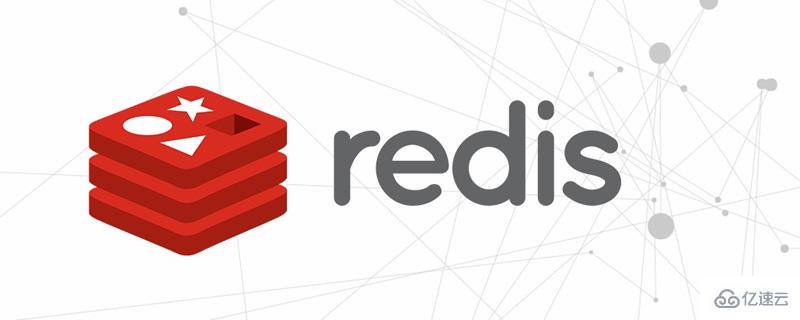
1. Command line
1.1. iredis
Use iredis, use | Process redis through the pipe using other shell tools, such as jq/fx/rg/sort/uniq/cut/sed/awk, etc. It can also auto-complete, highlight, and have many functions.
Official website address: https://iredis.io/
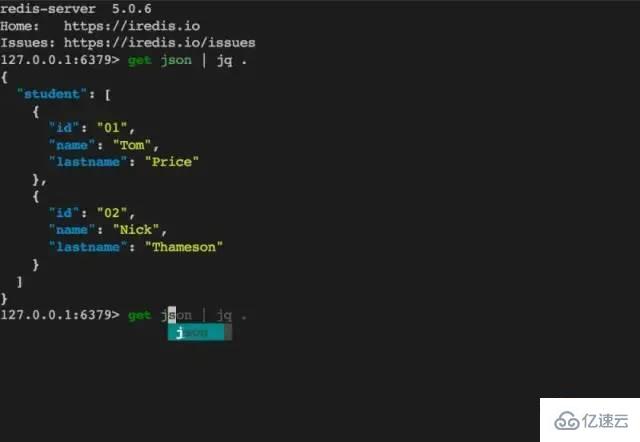
2. Visualization tools
2.1, Desktop client version
2.1.1, Redis Desktop Manager
This tool should be the most widely used visualization tool now. It has been around for a long time. It went through several iterations. Cross-platform support. It used to be free, but now it's a paid tool. The trial can last for half a month. [Related recommendations: Redis video tutorial]
Official website address: https://redisdesktop.com/
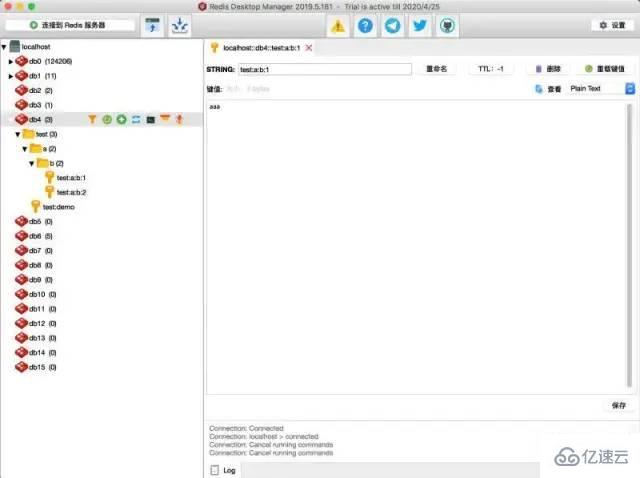
Review:
I used it before and thought the function was okay, but the interface UI was a bit ugly. I recently downloaded the latest version, and I feel that after such a long period of iteration, the interface looks just fine. All the functions are available. The interface looks relatively simple and has full functions.
The display of key can support the key name space separated by colon. In addition to the five basic data types, it also supports the new Stream data type of redis 5.0. In terms of value display. Supports up to 9 data display methods.
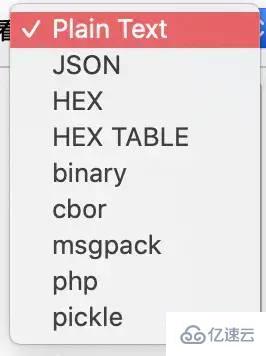
#The command line mode has also made great progress compared to before, supporting automatic command prompts.

The functions look quite satisfactory and easy to use. The biggest drawback is that it's not free. For personal use, it costs about 200 RMB a year.
2.1.2, medis
The redis visualization tool I use most at this stage. The interface matches personal aesthetics. The layout is simple. Cross-platform support, the key is free.
Official website address: http://getmedis.com/

Review:
Looks pretty good , the function meets the requirements of daily use. Keys are identified by brightly colored icons. It performs keyword searches very conveniently, can fuzzy search for matching keywords, and performs step-by-step scanning operations without obvious lags. The search experience is quite good.
The disadvantage is that it does not support key namespace display, does not support the stream data type of redis 5.0, the command line is relatively simple, and does not support automatic matching and prompts. There are only 3 supported value display methods

2.1.3, Another Redis Desktop Manager
One is relatively stable and concise redis UI tool.
GitHub address: https://github.com/qishibo/AnotherRedisDesktopManager
Gitee address: https://gitee.com/qishibo/AnotherRedisDesktopManager/
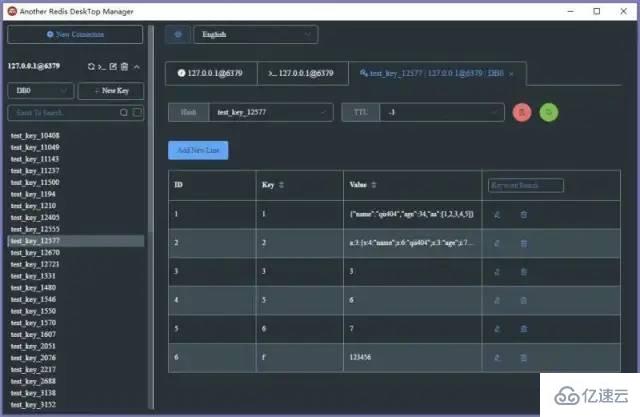
Evaluation:
This free Redis visualization tool has basically complete functions, presents a standard-compliant design, and also supports the Stream data type. It has monitoring statistics, supports dark themes, and supports the addition of clusters.
The disadvantage is that there are no highlights, the UI is very simple, and the command line mode is relatively simple. However, the author is also constantly updating and optimizing

##2.1.4, FastoRedis
FastoRedis has not been heard before. Then I went to experience it. To use this tool, you must first go to the official website to register an account. This software is a paid software. Although it is cross-platform, the trial period is only one day. Official website address: https://fastoredis.com/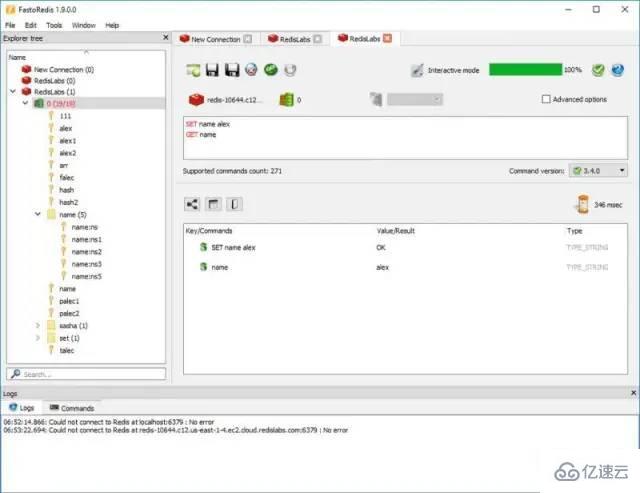
Review:
After all, it is a paid software , although the interface has a strong Windows style, it looks a bit like redis desktop manager at first glance, but in terms of functionality. It's really good. It supports cluster mode and sentinel mode, key namespace display, and the stream data type of redis 5.0 is also supported. Command line mode supports automatic prompt completion
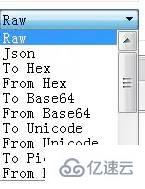
In general, in addition to the slightly stiff interface UI interaction and the fact that it is a paid software, it is also a very good redis visualization tool.
2.1.5, RedisPlus
An open source free desktop client software.
Official website address: https://gitee.com/MaxBill/RedisPlus
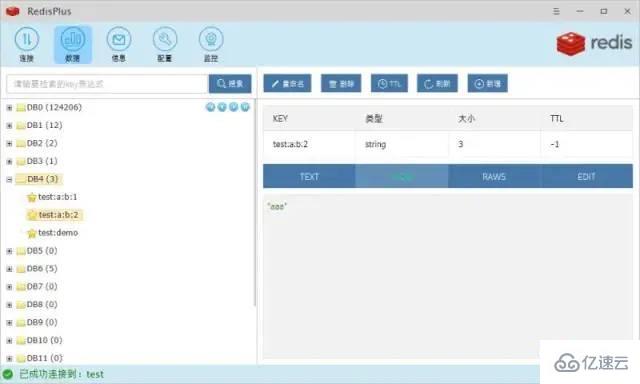

## Comments:
There are no highlights, just basic functions. A bonus might be having a monitor. Others are very ordinary. Even this software does not even have a command line mode. Although javafx is used for development and should have cross-platform features, the download link provided to users does not directly provide an installation package for mac. Besides, even if it is cross-platform.2.1.6, Red
This is a redis visualization tool downloaded from the Apple app store. Mac users can go to the app store and search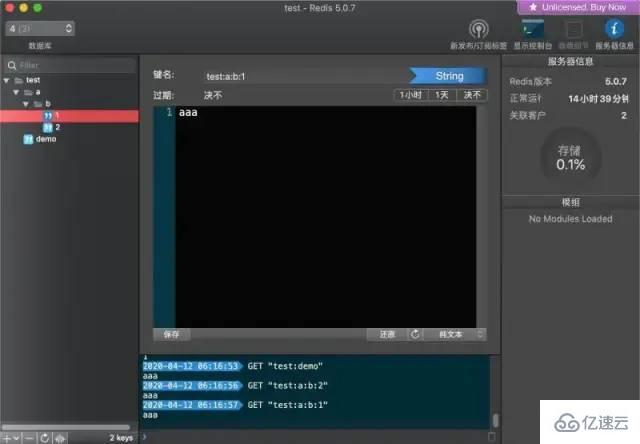
Review:
only supports the Mac version, and it looks pretty good. The functionality is mediocre. It has basic functions and supports display of key namespace.2.1.7, Redis Assistant
For details, please refer to this guy’s blog ==》Portal (https://blog.csdn.net/qq_32779119/article /details/121043208)2.2, web version
2.2.1, Redis Insight
This monitoring and analysis level The redis visualization tool was actually developed by redis labs, and its background is very powerful. This software is a web version. What kind of company is redis labs? redis labs was founded in 2011. The company is committed to providing cloud hosting services for popular NoSQL open source databases such as Redis and Memcached. It can be regarded as a professional company dedicated to redis cloud. The software they provide can not only connect the enterprise's private Redis service, but also connect their Redis cloud. Official website address: https://redislabs.com/redisinsight/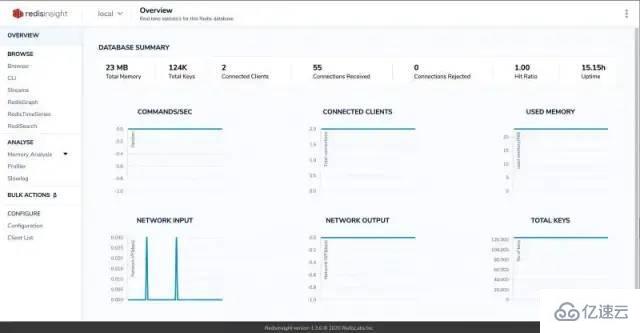
Review:
Although it is The web version, but this software goes beyond my understanding of redis visualization tools. When I look at the interface, I feel that it is very professional and does not look like an open source product developed by an individual. I found that key query and browsing are just a functional module here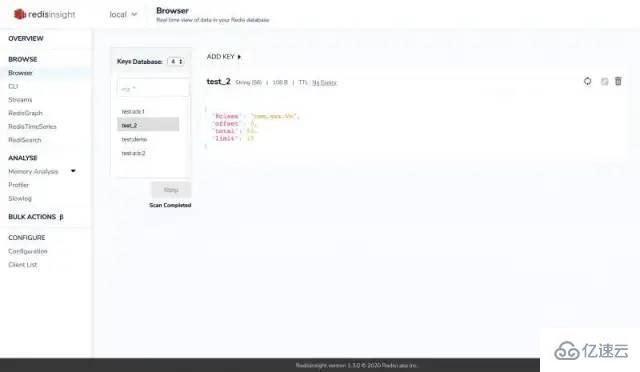
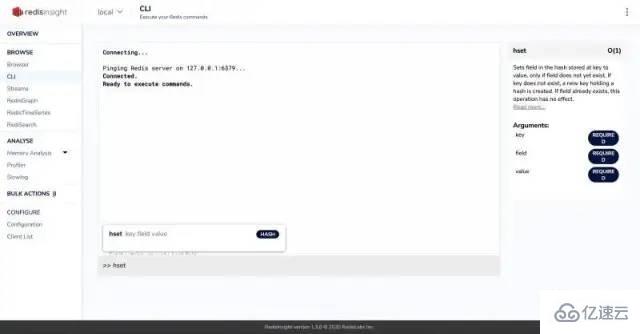

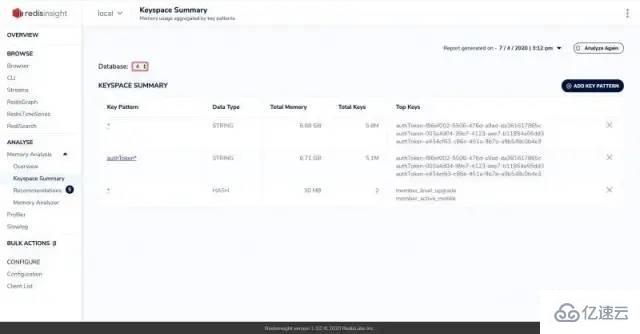
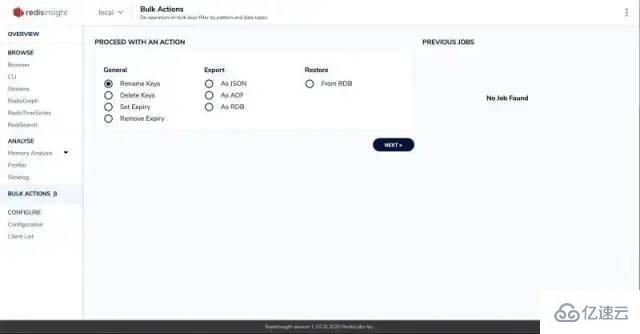
2.3, IDE tool plugin
2.3.1, Iedis2
Iedis is a plug-in based on IntelliJ IDEA , you can search it in IDEA’s plugin market, but it is a paid plugin. Can be tried for 7 days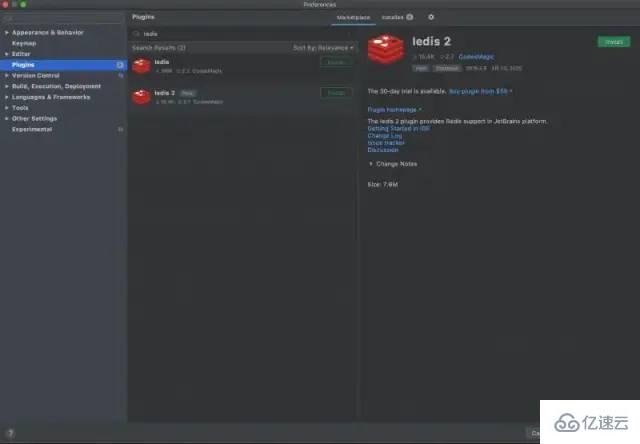
Review:
The cross-platform nature of this plug-in is of course guaranteed, because it is an IDEA plug-in, and the style used is completely consistent with IDEA, so its appearance is also guaranteed. Functionally, Iedis is also unambiguous. There is basically nothing wrong with the basic query function. Coupled with IDEA's usage habits, you can use it easily without opening additional software. Switching between the code and plug-in windows can also improve efficiency
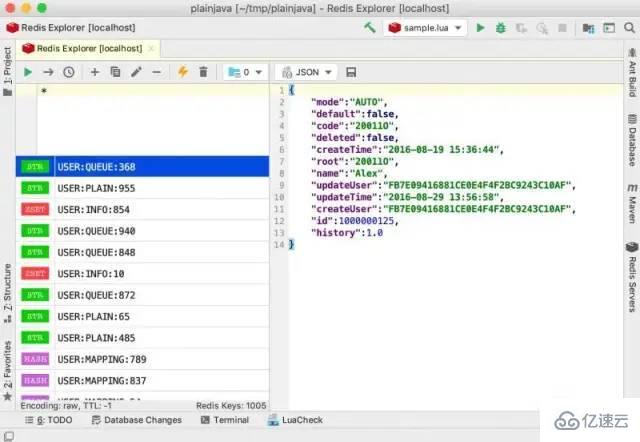
A feature never seen in other software is that the plug-in supports writing and debugging Lua scripts. In the past, I used Lua extensively for redis operations in a business. Although I enjoyed the atomicity and performance of redis Lua, it was a pain when writing and debugging. Because I couldn’t debug, I needed to return a value every time. Let's check what went wrong. Seeing this tool, I regret not discovering this plug-in earlier, and I am willing to pay
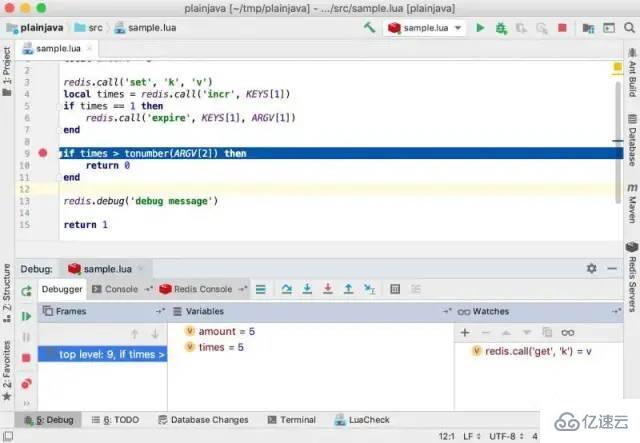
This plug-in also supports slow command viewing

In general, except for the need to pay, everything else about Iedis looks great. price is. . . $139/year. It’s still US dollars. When you see this price, do you sigh?
The above is the detailed content of What are the visualization tools for Redis?. For more information, please follow other related articles on the PHP Chinese website!

Hot AI Tools

Undresser.AI Undress
AI-powered app for creating realistic nude photos

AI Clothes Remover
Online AI tool for removing clothes from photos.

Undress AI Tool
Undress images for free

Clothoff.io
AI clothes remover

Video Face Swap
Swap faces in any video effortlessly with our completely free AI face swap tool!

Hot Article

Hot Tools

Notepad++7.3.1
Easy-to-use and free code editor

SublimeText3 Chinese version
Chinese version, very easy to use

Zend Studio 13.0.1
Powerful PHP integrated development environment

Dreamweaver CS6
Visual web development tools

SublimeText3 Mac version
God-level code editing software (SublimeText3)

Hot Topics
 1386
1386
 52
52
 How to build the redis cluster mode
Apr 10, 2025 pm 10:15 PM
How to build the redis cluster mode
Apr 10, 2025 pm 10:15 PM
Redis cluster mode deploys Redis instances to multiple servers through sharding, improving scalability and availability. The construction steps are as follows: Create odd Redis instances with different ports; Create 3 sentinel instances, monitor Redis instances and failover; configure sentinel configuration files, add monitoring Redis instance information and failover settings; configure Redis instance configuration files, enable cluster mode and specify the cluster information file path; create nodes.conf file, containing information of each Redis instance; start the cluster, execute the create command to create a cluster and specify the number of replicas; log in to the cluster to execute the CLUSTER INFO command to verify the cluster status; make
 How to clear redis data
Apr 10, 2025 pm 10:06 PM
How to clear redis data
Apr 10, 2025 pm 10:06 PM
How to clear Redis data: Use the FLUSHALL command to clear all key values. Use the FLUSHDB command to clear the key value of the currently selected database. Use SELECT to switch databases, and then use FLUSHDB to clear multiple databases. Use the DEL command to delete a specific key. Use the redis-cli tool to clear the data.
 How to read redis queue
Apr 10, 2025 pm 10:12 PM
How to read redis queue
Apr 10, 2025 pm 10:12 PM
To read a queue from Redis, you need to get the queue name, read the elements using the LPOP command, and process the empty queue. The specific steps are as follows: Get the queue name: name it with the prefix of "queue:" such as "queue:my-queue". Use the LPOP command: Eject the element from the head of the queue and return its value, such as LPOP queue:my-queue. Processing empty queues: If the queue is empty, LPOP returns nil, and you can check whether the queue exists before reading the element.
 How to use the redis command
Apr 10, 2025 pm 08:45 PM
How to use the redis command
Apr 10, 2025 pm 08:45 PM
Using the Redis directive requires the following steps: Open the Redis client. Enter the command (verb key value). Provides the required parameters (varies from instruction to instruction). Press Enter to execute the command. Redis returns a response indicating the result of the operation (usually OK or -ERR).
 How to use redis lock
Apr 10, 2025 pm 08:39 PM
How to use redis lock
Apr 10, 2025 pm 08:39 PM
Using Redis to lock operations requires obtaining the lock through the SETNX command, and then using the EXPIRE command to set the expiration time. The specific steps are: (1) Use the SETNX command to try to set a key-value pair; (2) Use the EXPIRE command to set the expiration time for the lock; (3) Use the DEL command to delete the lock when the lock is no longer needed.
 How to read the source code of redis
Apr 10, 2025 pm 08:27 PM
How to read the source code of redis
Apr 10, 2025 pm 08:27 PM
The best way to understand Redis source code is to go step by step: get familiar with the basics of Redis. Select a specific module or function as the starting point. Start with the entry point of the module or function and view the code line by line. View the code through the function call chain. Be familiar with the underlying data structures used by Redis. Identify the algorithm used by Redis.
 How to solve data loss with redis
Apr 10, 2025 pm 08:24 PM
How to solve data loss with redis
Apr 10, 2025 pm 08:24 PM
Redis data loss causes include memory failures, power outages, human errors, and hardware failures. The solutions are: 1. Store data to disk with RDB or AOF persistence; 2. Copy to multiple servers for high availability; 3. HA with Redis Sentinel or Redis Cluster; 4. Create snapshots to back up data; 5. Implement best practices such as persistence, replication, snapshots, monitoring, and security measures.
 How to use the redis command line
Apr 10, 2025 pm 10:18 PM
How to use the redis command line
Apr 10, 2025 pm 10:18 PM
Use the Redis command line tool (redis-cli) to manage and operate Redis through the following steps: Connect to the server, specify the address and port. Send commands to the server using the command name and parameters. Use the HELP command to view help information for a specific command. Use the QUIT command to exit the command line tool.




